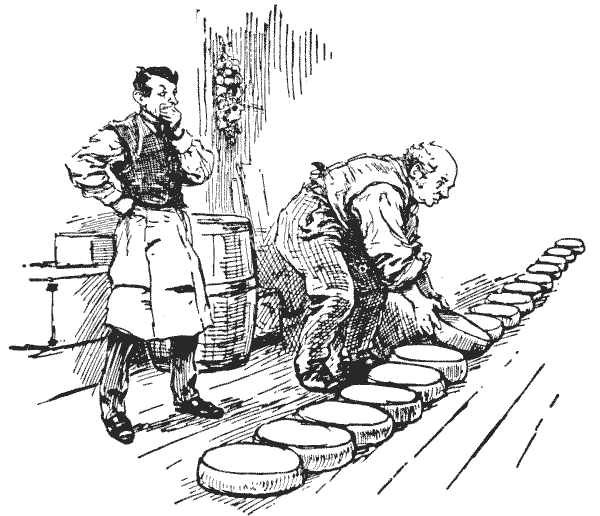
The cheesemonger depicted in the illustration is an inveterate puzzle lover. One of his favorite puzzles is the piling of cheeses in his warehouse, an amusement that he finds good exercise for the body as well as for the mind. He places sixteen pieces of cheese on the floor in a straight row and then makes them into four piles, with four pieces of cheese in every pile, by always passing a cheese over four others. If you use sixteen counters and number them in order from $1$ to $16,$ then you may place $1$ on $6,$ $11$ on $1,$ $7$ on $4,$ and so on, until there are four in every pile. It will be seen that it does not matter whether the four passed over are standing alone or piled; they count just the same, and you can always carry a cheese in either direction. There are a great many different ways of doing it in twelve moves, so it makes a good game of "patience" to try to solve it so that the four piles shall be left in different stipulated places. For example, try to leave the piles at the extreme ends of the row, on Nos. $1,$ $2,$ $15$ and $16;$ this is quite easy. Then try to leave three piles together, on Nos. $13,$ $14,$ and $15.$ Then again play so that they shall be left on Nos. $3,$ $5,$ $12,$ and $14.$
Solutions: 1
This eBook is for the use of anyone anywhere in the United States and most other parts of the world at no cost and with almost no restrictions whatsoever. You may copy it, give it away or re-use it under the terms of the Project Gutenberg License included with this edition or online at http://www.gutenberg.org. If you are not located in the United States, you'll have to check the laws of the country where you are located before using this ebook.